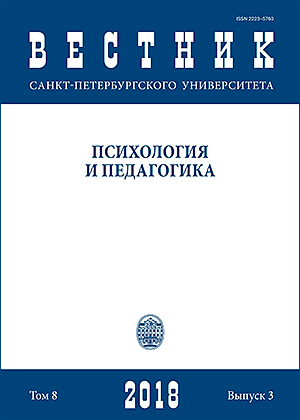Features of the persons’ images of different social statuses among young people
DOI:
https://doi.org/10.21638/11701/spbu16.2018.307Abstract
The article focuses on the socio-psychological analysis of social status through the prism of typical specimen’s images of a high and low-status person which are essential for the youths. The data was collected via essays written by respondents (n = 70) on the theme “typical representative of high and low status”. The data was processed using the thematic modeling method (Latent Dirichlet allocation), and the content analysis method was applied, in which the semantic units of images were identified and analyzed. The main components of the images were: behavioral characteristics of a person, objective sources of social status, features of appearance, non-verbal behavior, personality qualities and feelings of such people. The categories of “personality quality” and “feelings” which were attributed to these images are psychological components in the phenomenon of social status. So it requires additional study and analysis. At this stage of the study, it was established that the qualities of the personality that were cited by the respondents are a necessary condition for entering and staying in a status group, whereas feelings are, rather, a consequence of a person’s belonging to a particular status. A significant emotional saturation of the images of high-status and a low-status person we found. It can be a consequence of the presence of two different meanings of a social status phenomenon: one is considered by a person as accepted in society and associated with the material component (negative); the second is based on individual interpretation schemes and is associated with socially significant activities (positive).
Keywords:
social status, social perception, inequality, miscellaneous research methods
Downloads
References
Downloads
Published
How to Cite
Issue
Section
License
Articles of "Vestnik of Saint Petersburg University. Psychology" are open access distributed under the terms of the License Agreement with Saint Petersburg State University, which permits to the authors unrestricted distribution and self-archiving free of charge.




